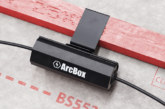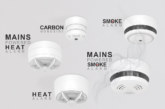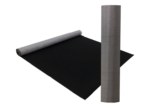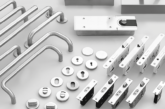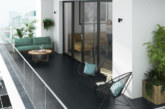The future of fire safety is changing. From predictive advancements to sustainable technologies, housebuilders and developers have the opportunity to specify preventative protection systems tailored to each individual property and their owners. Here Nick Rutter, Chief Product Officer at FireAngel, explores the latest innovations available to the UK market to not only help achieve constant compliance, but provide intelligent solutions that can adapt for the future.
Following the Hackitt Review, many developers are looking to adopt its principles to ensure the long-term efficiency of their properties with regard to fire safety. While specifying smoke and heat alarms that quickly and adequately respond to all types of fires is essential, developers can go above and beyond legal requirements by choosing innovative solutions that react in real time to potential or actual fire events.
While ionisation sensing technology was traditionally a popular choice due to its low price point and outstanding ability to detect fast-flaming fires, the concerns regarding its potential radioactivity and sensitivity quickly began to outweigh its benefits.
 To ensure the quickest response times are ensured for all types of fires and maintain compliance with latest standards and regulations including British Standard 5839-6, developers should look to specify multi-sensing or optical alarms throughout the circulation areas of their properties, including landings and hallways. This will provide a basis for ensuring all minimum requirements with regard to fire safety are met.
To ensure the quickest response times are ensured for all types of fires and maintain compliance with latest standards and regulations including British Standard 5839-6, developers should look to specify multi-sensing or optical alarms throughout the circulation areas of their properties, including landings and hallways. This will provide a basis for ensuring all minimum requirements with regard to fire safety are met.
However, there are a wide range of technologies currently available to aid professionals in taking this compliance one step further, supporting them in adopting a proactive approach to the long term safety and suitability of their properties.
Following the governments confirmation of the Future Homes Standard by 2025, housebuilders and developers are also under increasing pressure to improve the sustainability of the construction process, whilst also ensuring the long term efficiency of the home for potential owners. While fire protection systems may not initially appear an effective place, latest advancements in technology has led to the creation of a mains-powered smoke alarm that has a proven carbon footprint.
Typically, a smoke alarm spends 99.9% of its time in standby, dissipating the unused energy through heat, which is extremely inefficient. Once the alarm is activated, a significant increase in power is utilised, which is commonly provided by ‘dropping’ the voltage from the mains power supply.
However, latest developments have led to the creation of mains-powered ranges that are Smart RF compatible and feature an intelligent ‘step down’ circuit that monitors the active state of the alarm to adequately manage the power available. This ensures the alarm uses just 10% of the energy when compared to the average AC alarm, significantly improving the long-term efficiency of the alarm throughout its 10-year lifespan.
As the range is Smart RF compatible, it also provides professionals with the adaptability to futureproof their properties to meet the specific needs of future residents. Offering the benefits of both Thermoptek and Thermistek sensing technology to adequately respond to all fire types, it supports developers in adopting a mixed system that interlinks hardwired and wireless mains and battery powered alarms.
A mixed system (also known as a hybrid system) not only provides the opportunity to adopt both 230V mains AC 50Hz and DC battery alarms, you can also include Smart RF ready alarms, providing enhanced flexibility as additional smoke, heat, CO and specialised products, such as alarm control units, strobe and pads and low frequency sounders can easily be wirelessly added or removed.
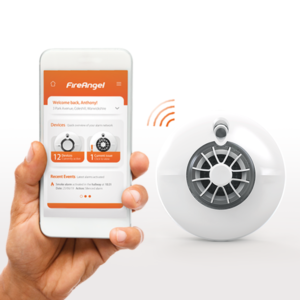 This enables professionals to achieve a higher standard of fire protection throughout an entire property, where previously a hardwire interlink may not have been possible. Smoke, heat and carbon monoxide (CO) alarms, can be meshed together on a private network so when once alarm sounds, they all sound to immediately notify homeowners of a potential fire or CO event, aiding their safe and quick exit of the property.
This enables professionals to achieve a higher standard of fire protection throughout an entire property, where previously a hardwire interlink may not have been possible. Smoke, heat and carbon monoxide (CO) alarms, can be meshed together on a private network so when once alarm sounds, they all sound to immediately notify homeowners of a potential fire or CO event, aiding their safe and quick exit of the property.
Because the alarms are Smart RF compatible, developers have the flexibility to upgrade the system by installing a Smart RF radio module into the alarm. This provides wireless interlinking of up to 50 alarms within one network, providing homeowners, along with their family and friends, the opportunity to also access vital information including current status, alarm history, replacement dates and network health through the activation of a cloud-based gateway.
By utilising a gateway, which uses a unique algorithm and features patented Predict technology to identify and highlight dangerous patterns of behaviour with regard to fire safety, it bridges the gap in communication by instantly notifying necessary individuals in the event of an alarm activation. For example, high risk or vulnerable individuals, such as those living with dementia, who may leave the hob on after cooking a meal, can be remotely overseen by family members as the gateway sends updates in real-time regarding the status of the smoke, heat and CO alarms installed throughout the property.
By adopting a proactive approach to the passive fire protection systems installed throughout their developments, housebuilders can create connected homes that efficiently provide the highest standards in fire and CO safety, well above the current legal requirements. This also provides homeowners with the opportunity to easily adapt or upgrade the fire protection within their home, to adequately meet the needs of themselves or their family members in the future as individual requirements change over time.



